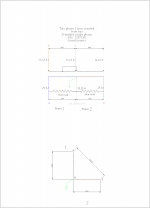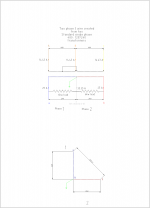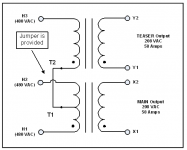rosslet
Member
- Location
- Ohio, United States
- Occupation
- Automation/Controls Engineer
Well that was an interesting discussion!This has gotten a little silly IMO.
I made the comments in posts #6 and #9 because it sounded like the OP thought he only needed to think about grounding a conductor if he uses the neutral. He needs to think about regardless, first of all, and that was my main point. His previous comments (such as possibly wanting 120V loads in the future) also precluded that he had any exotic reason not to ground the neutral point, or that he would prefer to install ground detectors. Which means the way he will wish to make the system code compliant is to ground the neutral.
I would still say , given the transformer used, that the system can be grounded in accordance with 250.20(B)(1), and therefore must be. In the case of electrofelon's application, his system can't be grounded at 120V because that would be incompatible with the load. So I think that's how he gets out of it. But the OP has no such excuse.
Anyways I appreciate you mentioning this earlier because, yes, I hadn't really known grounding it was code. I've always done it on the premise of, I didn't see any reason not to...I have to run a compliant ground for chassis so why not the tap too? But I wasn't aware it was absolutely required so thanks for mentioning that!



